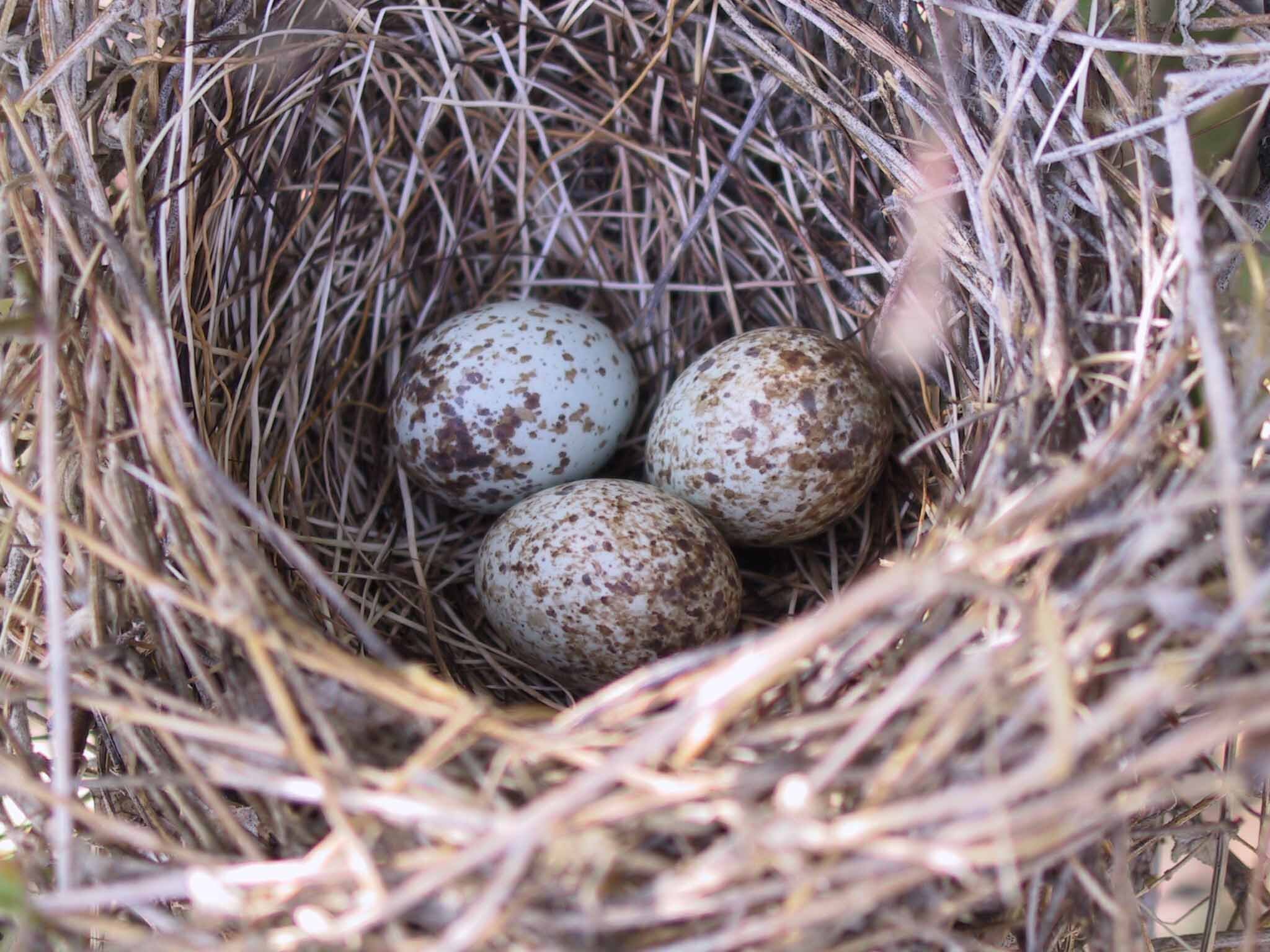Every year I am surprised to hear the song of the Northern Cardinal in February. They usually start singing here around Valentine’s Day, and this year it was exactly one week before when I awoke to the songs. Even in my groggy state I knew immediately that this was a cardinal singing, but as I awoke I began to doubt myself. It seemed early in the year for cardinal song. A glance out the window toward the apple trees revealed a brilliant and plump apple still on the tree—a male northern cardinal.
In many ways, the management at Faville Grove is not the optimal situation for cardinals. While we seek to restore open prairie and savanna vistas with a diverse herbaceous layer, the cardinal enjoys the brushy fencerow.
Photo by Jeff Pieterick
The cardinal’s existence in these habitats is somewhat of a marvel, and indicates why it is so difficult for other birds to succeed in these conditions. Cardinals occupy what is called edge habitat, so they don't like open grassland without shrubs, and they don't typically enjoy the deep forest either. Scattered trees and abundant shrub cover is preferred. This often occurs in fencerows, or put another way, it often occurs along highways for skunks, opossums, squirrels, raccoons, chipmunks, and weasels. All of these species are generalist predators and will gladly consume some songbird eggs. One study in Ohio found a nest success rate of just 15% for Northern Cardinals, with nearly all of the failed nests succumbing to mammalian predators.
Unfortunately, much of this edge habitat in Wisconsin is home to invasive brush species like honeysuckle and buckthorn, which threatens biodiversity. As it turns out, this can also threaten cardinal nests. Researchers found that cardinal nests in non-native shrubs were almost twice as likely to be predated, perhaps due to the low and sprawling nature of honeysuckle, cardinal nests in the bush were 1.5-2 meters lower on average than those in native shrubs, putting them that much closer to the nose of a hungry raccoon.
This honeysuckle may look nice, but it is a non-native and highly invasive species that our sanctuary staff are constantly trying to keep down. Photo by Joshua Mayer
Another hurdle for cardinals is the brown-headed cowbird, which parasitizes songbird nests by laying its egg in the nest and letting a species like the cardinal raise its young. For cowbirds, cardinals are a juicy potential host. Cardinals start nesting earlier in the year, as early as March or April, and cowbirds start laying eggs around that time so the cardinal is one of the few species it can parasitize that early in the season. One study found 48% of cardinal nests parasitized over the course of a season. Again, the cardinal’s preference for edge habitat is the exact situation where cowbirds can be most productive.
Northern Cardinal eggs, photo by Saguaro National Park
Interestingly, cardinal nests that were parasitized by cowbirds had a higher success rate than other nests. This seems counterintuitive since the cardinal then needs to raise another entire bird. Were cowbird females picking nests that were less likely to be predated? Perhaps they somehow realize that lower nests in honeysuckle are more likely to be found by predators. Some research suggests that this might be the case. Another possibility is that the cowbirds are more attuned to the specific cardinal that might host their egg(s). Researchers have demonstrated that female cardinals with the highest degree of red-orange in their bill, redness in their underwing, and black mask expression on the face correlated with body size, condition, and date of first nesting. Could a cowbird also recognize the relative condition of a cardinal and select a female who seems most fit to raise her eggs to the fledgling stage? Some research has shown that cowbirds seem to adjust the size of their egg based on the host; so when laying an egg in a large bird’s nest the cowbird will produce larger eggs; when laying eggs in a small bird’s nest, the cowbird will lay smaller eggs. At the very least, it seems the cowbirds are recognizing traits about their hosts.
That's mostly conjecture, but either way the bottom line is that life seems tough for breeding cardinals—and it is—but the cardinal is one of the most common birds in the United States, and the state bird for six states. How does it overcome all of these issues? Perseverance, for one, is key to its survival. Cardinals are prolific re-nesters and will typically rear at least two broods, which can sometimes take a half dozen nests. Their relatively large size, adaptable diet, and ability to live in human-dominated environments makes them especially suited for surviving these conditions.
Photo by James St. John
Thus, while the overgrown habitat of the cardinal is something of an eyesore to me, I can't help but appreciate the gritty determination of a bird all too often taken for granted, of a bird that overcomes so many perceived negatives, including the temperature on a polar vortex morning.
Written by Drew Harry, Faville Grove Sancutary land steward
Cover photo by Eric Begin









